calsfoundation@cals.org
Blue Mountain (Logan County)
| Latitude and Longitude: | 35°07’49″N 093°42’42″W |
| Elevation: | 515 feet |
| Area: | 1.07 square miles (2020 Census) |
| Population: | 88 (2020 Census) |
| Incorporation Date: | March 7, 1901 |
Historical Population as per the U.S. Census:
|
1810 |
1820 |
1830 |
1840 |
1850 |
1860 |
1870 |
1880 |
1890 |
1900 |
|
– |
– |
– |
– |
– |
– |
– |
– |
– |
– |
|
1910 |
1920 |
1930 |
1940 |
1950 |
1960 |
1970 |
1980 |
1990 |
2000 |
|
– |
– |
145 |
171 |
122 |
94 |
108 |
112 |
146 |
132 |
|
2010 |
2020 |
|
|
|
|
|
|
|
|
|
124 |
88 |
|
|
|
|
|
|
|
|
Blue Mountain is a town on State Highway 10 in Logan County. It is roughly halfway between Havana (Yell County) and Magazine (Logan County). The town was intended to be a resort community when it was planned in 1900; however, it has remained a quiet residential community in the valley between the Ozark and Ouachita mountains.
The town derives its name from a spur of Magazine Mountain, the highest point in the state of Arkansas. One of the first white settlers in the area was Thomas Ryles, who acquired a land patent in 1860. On June 19, 1862, a scout of Federal soldiers visited the Blue Mountain area from Batesville (Independence County) but encountered no resistance. After the Civil War, Ryles was joined by David Jenkins in 1875, Isaac Bynum in 1877, Peter Hooper in 1881, and Thomas Wright in 1890. A Baptist congregation was formed around 1876. A post office was established in the area in 1893; it was known as Maggie until 1901.
In 1898, the Choctaw, Oklahoma and Gulf Railroad began building a rail line to connect McAlester in Indian Territory (now Oklahoma) to Little Rock (Pulaski County). The line opened in 1900 and was acquired by the Rock Island Railroad in 1902. As a consequence of the railroad construction, a town was platted and named Blue Mountain in the summer of 1899. The town was incorporated in 1901, the same year the post office was renamed. By 1901, the town had seventy-five homes, fifteen businesses, two blacksmith shops, a church, and a school. A few years later, a Methodist church was also established. Tourists coming to visit Mount Magazine by train frequently disembarked in Blue Mountain. The Ku Klux Klan was active in Blue Mountain in the 1920s.
Highway 10 was part of the original state highway plan designed in 1926. It paralleled the railroad track through the Arkansas River Valley, bringing automobile traffic to Blue Mountain and beyond. During the Depression, businesses in Blue Mountain began to decline. Stores and blacksmith shops went out of business, and the school was consolidated into Magazine’s school district. Some homes were abandoned and allowed to disintegrate. Civilian Conservation Corps (CCC) camp No. 768 was established in Blue Mountain. The men of the camp engaged in forestry and also helped to improve roads in the area. A home demonstration club was organized in Blue Mountain in the 1930s.
In 1940, plans were made to dam the Petit Jean River near Blue Mountain to create an artificial lake. Work was started later that year but was suspended in 1942 because of the war effort. When World War II ended, construction resumed, and Blue Mountain Lake was completed in June 1947, at a total cost of $4,770,000. The primary purpose of the lake was flood control, but it became a recreational haven for fishers, boaters, and campers. The lake—which covers former farmland, roads, and cemeteries—is about 258,000 acres, receiving drainage from nearly 500 square miles of land. The lake has attracted more than 300 varieties of birds.
In 1946, Magazine’s school district used the old schoolhouse in Blue Mountain for fourth- and fifth-grade students because a fire had destroyed the school in Magazine. That same year, sparks from burning leaves in the cemetery ignited the Baptist church building, burning it to the ground.
In June 1977, two escapees from an Oklahoma prison—Paul Ruiz and Earl Van Denton—kidnapped and killed the town marshal of Magazine and an employee at Blue Mountain Lake, also seriously injuring a second employee at the lake. On the run for two weeks, the murderers were arrested in Portland, Oregon, and were held for nearly twenty years during trials, retrials, stays of execution, and other legal maneuvering. They were both executed by lethal injection in Arkansas in January 1997.
The Rock Island Railroad stopped carrying passengers in 1967. Eventually, it went bankrupt and was closed for good in 1980. Rail lines were removed from Blue Mountain in 1986. Meanwhile, residents of the town adjusted to the changing economy. Most travel by car to jobs in Booneville (Logan County), Paris (Logan County), or Fort Smith (Sebastian County). The farms in the area largely became poultry producers. Water is supplied from Booneville, and a volunteer fire department has served Blue Mountain since 1979. A wildlife management area (WMA) located near Blue Mountain includes the Blue Mountain Wildlife Demonstration Area. Assessments for hunting dogs are held in this demonstration area.
In the twenty-first century, Blue Mountain is without stores, restaurants, or churches. The post office, city hall, and police department are the other functioning entities in the town. The population in 2010 was 124, of whom 110 were identified as white, ten as Native American, and four as Hispanic.
For additional information:
Beck, Kitty. “Blue Mountain Dam Project.” Wagon Wheels 11 (Spring/Summer 1991): 8–13.
Biggs, Jackie Sue. “Solon Cannon Remembers CCC Co. 768 at Blue Mountain.” Wagon Wheels 14 (Winter 1994): 5–11.
Calva, Grace Ryan. “Blue Mountain Post Office—Past & Present.” Wagon Wheels 21 (Spring/Summer 2001): 28–30.
Logan County Historical Society. Logan County, Arkansas, Its History and Its People. Dallas: Taylor Publishing Company, 1987.
Steven Teske
Butler Center for Arkansas Studies
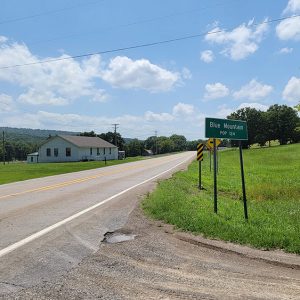 Blue Mountain
Blue Mountain 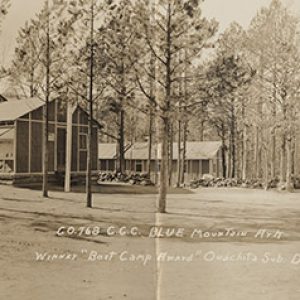 Blue Mountain CCC
Blue Mountain CCC 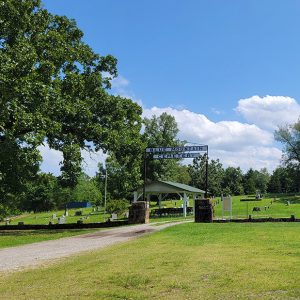 Blue Mountain Cemetery
Blue Mountain Cemetery 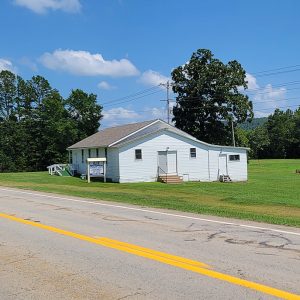 Blue Mountain Church
Blue Mountain Church  Blue Mountain Dam
Blue Mountain Dam 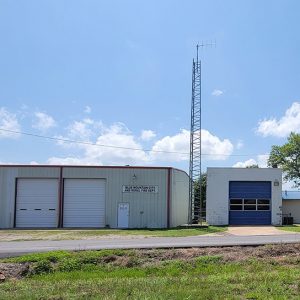 Blue Mountain Fire Department
Blue Mountain Fire Department 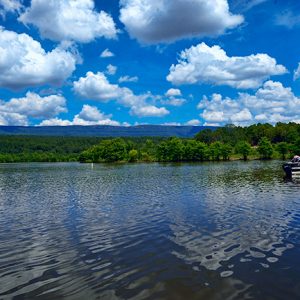 Blue Mountain Lake
Blue Mountain Lake 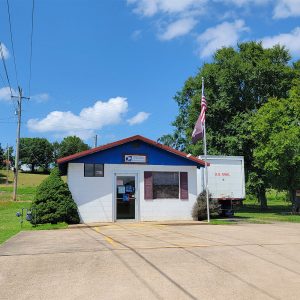 Blue Mountain Post Office
Blue Mountain Post Office 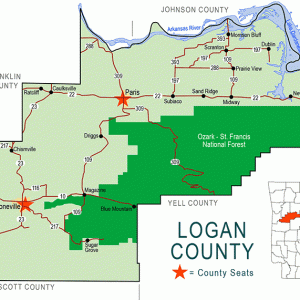 Logan County Map
Logan County Map 



Comments
No comments on this entry yet.